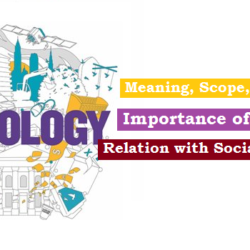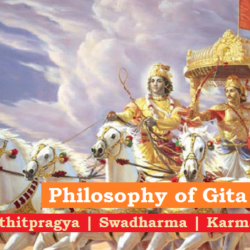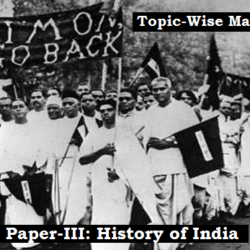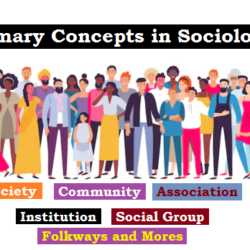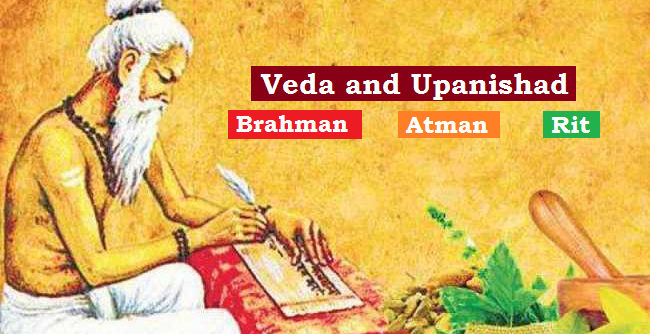
Veda
| Veda: from Sanskrit Vid meaning knowledge |
The Vedas are ancient Vedic Sanskrit religious texts. They are the oldest scriptures of Hinduism and considered to be the primary sources of Indian Philosophy transmitted orally to the next generation (called Stuti).
The Vedas are not authored by a human (called Apauruseya) and serve as a guide through its teaching (called Shastra). The words ‘Agama’ (tradition or that which has come down) and ‘Amnaya’ (sacred tradition handed over by repetition)are synonyms to the Vedas.
Nature of Gods:
It is very important to note that in the Vedic tradition, we can only find either impersonal gods (like all nature gods) or quasi-personal gods. The Vedic gods resemble human beings that is even impersonal gods were animated. In Sanskrit, god means ‘Deva’ which means two things- one which gifts and one which shines; i.e., the source of light. Life depends upon light. So, naturally, life depends upon the gods.
The number of gods, it is said in the Vedic tradition is indefinite. However, it is desirable to make a list of very important gods, numbering thirty-three (33 कोटी is not 33 Crore but 33 types/numbers) , who hold key portfolios.
Purusha: The Supreme Reality
The idea permeating the Rigveda is that nature in all its diversity and multiplicity is not a chaos but is governed by a basic cosmic law (Rita). To this law are subjects not only all natural phenomena, such as the movement of the planets and the generation, decay and death of organisms, but also truth and justice. The conception of Rita further harmonized the gods with one another, and paved way for monotheism.
The Rig Veda refers to the supreme reality underlying and unifying all existence by the term ‘Purusha’ which is not only impersonal but beyond all names and forms, and hence is inexpressible and indescribable. It is immanent and transcendent – immanent because it pervades all existence, thereby rendering it a unity; transcendent, because it is not exhausted by existence but goes beyond it. That One (Tad Ekam) was later identified with Brahman or Atman.
Therefore the Vedas advocated spiritualistic monism which is the bedrock of Hindu religion and philosophy.
Four Portions of Vedas:
- Samhita:
- Mantras are hymns in praise of gods invoked in a ritual.
- Collection of mantras is known as ‘Samhitas’
- Many worldly affairs especially related to human life are also found in different Samhitas:
- Rig-Samhitas: earliest mention on marriage and ancestral worship
- Yajur-Samhitas: prescribes the procedures for performance of daily and occasional duties of an individual
- Atharva-Samhitas: mark the beginning of ancient ruling and administration; actions like conquering an enemy, gaining wealth etc. Ayushya-Sukta of Atharva is quite well-known for it is the prayer for long healthy life.
- Brahmanas:
- An elaboration and are treated as the commentary to the Samhita portions
- Theseportions primarily teach the nature of ritual (yajna) and thus the word Brahmana also means ‘Yajna’(ritual).
- Aranyakas: deals with meditation which are generally taken up while living in forest (Aranya)
- Upanishads:
- reveal the Absolute Truth, which provides the means to liberation and is popularly known as the ‘Vedanta’
- They are the prime source of many philosophical conclusions.
Therefore, Upanishads are also part of the Vedas. But, popularly the ritualistic and meditative portions (or at times only the ritualistic portions) came to be known as Veda and the philosophical discovery in the Upanishads got a distinct identity.
Vedic Rituals: through four Rtviks
For a Vedic ritual to take place, it requires four Rtviks(roughly translated as Priests) who are considered to be the disciples of Sage Vyasa.
- Hota: who invokes the deity of a particular ritual by employing the invocatory hymns as found in the Rigveda.
- Adhvaryu: who performs the rituals as enjoined in the Yajurveda.
- Udgatha: who sings in high intonation and maintains the rhythm of chanting as given in Samaveda.
- Brahma: who takes care of the entire proceedings of the ritual and suggests compensatory acts in case of omissions and commissions.
Forms of Veda:
Veda is one source with three forms and this is often referred to as ‘Veda Trayi’ or Three Vedas. Three Vedas means the threefold creation.
- Rigveda: means praise or eulogy
- Considered to be created from Agni or Fire
- Considered as the oldest record of revelations and the language as the most ancient.
- Contains Suktas and Mandalas. Sukta means that which has been received from a reliable source and the Mandalas are the sections.
- Important Brahmanas, Aranyakas and Upanishads of Rigveda are:
- Brahmanas: Aitareya Brahmana, Shankyayana Brahmana
- Aranyakas: Aitareya Aranyaka, Shankyayana Aranyaka
- Upanishads: Aitareya Upanishad, Kausitaki Upanishad
2. Yajurveda:
- Considered to be created from Vayu or Air
- Widely popular with varied descriptions of the yajna or rituals .
- There are two divisions of Yajur, namely Krishna Yajurveda and Shukla Yajurveda.
- Important Brahmanas, Aranyakas and Upanishads of Yajurveda are:
- Brahmanas: Taittiriya Brahmana, Shatapatha Brahmana
- Aranyakas: Taittiriya Aranyaka, Brihadaranyaka
- Upanishads: Kathopanishad, Taittiriyopanishad
3. Samaveda:
- Considered to be created from Aditya or Sun
- It is the Rig Veda set in musical form.
- The three main branches of Samaveda are Kauthuma branch, Ranayaniya branch and Jaiminiya branch.
- The various intonations and method of singing in different pitches are mentioned in detail in the Samaveda.
- Important Brahmanas, Aranyakas and Upanishads of Samveda are:
- Brahmanas: Daivatam Brahmana, Vamshabrahmanam Brahmana,Tandyam Brahmana
- Aranyakas: Talavakara Aranyaka
- Upanishads: Chandogyopanishad
The popular view is that the Sage Vyasa segregated the Vedic hymns, that is, the Mantra-Samhitas into four, viz., Rig-Samhita, Yajur-Samhita, Sama-Samhita and Atharva-Samhita.
4. Atharvaveda:
- It refers to the ‘Soma’ or the essence without which the above three cannot survive.
- There are three Samhitas of the Atharva, namely, Aashi, Acharya and Vidhiprayoga Samhitas.
- Important Brahmanas, Aranyakas and Upanishads of Atharveda are:
- Brahmanas: Gopatha Brahmana
- Aranyakas: none found
- Upanishads: Prashnopanishad, Mundakopanishad and Mandukyopanishad
Upanishad
| Upanishad= upa+ni+sat |
| upa: approaching a teacher; ni: for knowledge; sat: to attain liberation |
| Meaning: to sit near (the Guru) with devotion. |
Upanishads are also part of the Vedas. But, popularly the ritualistic and meditative portions (or at times only the ritualistic portions) came to be known as Veda and the philosophical discovery in the Upanishads got a distinct identity.
The Upanishads mark the concluding parts of the Vedic literature. Introspection and self-correction paved the way for the evolution of the Upanishads. It is said that the Vedic thought matured and reached its culmination in the Upanishads. Therefore, Upanishads are regarded as the ‘end of the Vedas’ (Vedanta).
There emerged a divergence of opinion in later Vedic stages as Brahmin class subscribed to the tradition of the Brahmanas, whereas the Kshatriyas denounced excessive emphasis laid on yagas which the Brahmanas specified. The origin of the Upanishads, therefore, is traced to the Kshatriya class.
Important Themes of Upanishads:
- Dialogue form: mostly, the Upanishads are in the form of dialogue- dialogue between teacher and student. Dialogue indicates discussion.
- Heterogeneity: there are major 15 Upanishads with difference in thought and subject matter.
- Against rituals: reflection and introspection changed priorities and Gods, rituals also made an unceremonious exit. Upanishads were called Jnana Kanda in contrast to the Brahmanas, which were termed Karma Kanda. Even Bhakti became irrelevant.
- Unity in diversity: the Upanishads began with the hypothesis that there should be only one fundamental principle. The unity behind diversity in external world and unity in diverse forms of life followed by identification of Brahman and Atman resulted into monism. Therefore, the central concern of the Upanishads is the connections ‘between parts of the human organism and cosmic realities’.
- Analysis of mind: mind or manas and soul or Atman are distinct as manas is a state of Atman. The states of mind, very interestingly, correlate with the states of matter which physics recognizes today.
- Solid: Jagrut (Waking)
- Liquid: Swapna (Dream)
- Gas: Sushupti (Deep sleep)
- Plasma: Turiya (Transcendental).
- As we pass from the first stage to the last one, we realise that we pass from ‘concrete’ to ‘abstract’. The last states of both mind and matter fall outside the scope of common man. Turiya is inexplicable.
- Higher knowledge for Moksha: The main theme of the Upanishads is that only higher knowledge is the means. Vedanta does not regard the Vedas as final authority.
- The Upanishads admit that ignorance (avidya) is the source of evil and there are three stages to eliminate this evil: Shravana (listening to scriptures), Manana (reflection on the teaching so as to remove doubts) and Nididhyasana (dwelling on the teaching).
- In addition to knowledge (Jnana), Vairagya which means detachment or disinterestedness (and not indifference) has to be cultivated. With generosity and unselfishness Vairagya is cultivated and therefore become meaningless if man is not a part of society. It means that Jivanmukti does not denounce social life.
- The highest goal of life for the Upanishads is no longer happiness as in the Rig Veda, but liberation from bondage to the transitory existence and the re-attainment of the inner essence of the soul.
Vedas Vs Upanishads
| Vedas | Upanishads |
| 1. Vedas were composed before Upanishads (12th-4th Century BC) | 1. The Upanishads were written after Vedas (7th-4th Century BC) |
| 2. Vedas focused on ritualistic details, uses and traditions. | 2. Upanishads focused on Spiritual enlightenment. |
| 3. Vedas means knowledge in Sanskrit. It is known as “Apauruseya” meaning not of man. | 3. Upanishad means to sit near (the Guru) with devotion |
| 4. There are 4 Vedas with lesser heterogeneity of subjects. | 4. There are more than 200 Upanishads with heterogeneous subjects. |
| 5. Vedas are known as Karma Kanda for their emphasis on rituals. | 5. Upanishads are known as Jnana Kanda for their emphasis on knowledge. |
Brahman and Atman
| Brahman (ब्रह्म): supreme self in Sanskrit |
The Brahman is the ultimate reality and the Atman is individual self (soul). Brahman is the material, efficient, formal and final cause of all that exists. It is the pervasive, genderless, infinite, eternal truth and bliss which does not change, yet is the cause of all changes.
Brahman is the cosmic principle: Brahman conceived as qualified (Saguna) is God (Isvara). The Absolute in relation to the empirical world is God. The cosmic Brahman is the creator, preserver, and destroyer of the world. All creatures spring out of Brahman. They live in Brahman and are re-absorbed in Brahman.
| Atman (आत्मां): essence, breath, soul in Sanskrit |
The Atman means the inner self, the soul, the immortal spirit in an individual, and all living beings including animals and trees. Upanishads state that the inmost core of every person is not the body, nor the mind, nor the ego, but Atman- “soul” or “self”. Atman is the spiritual essence in all creatures, their real innermost essential being. It is eternal, it is ageless.
The Atman is the psychic principle: It is the foundational consciousness which is the ground of the universe. It is the ground of our empirical consciousness. The eternal, universal light of consciousness resides in our heart and illumines all objects of our knowledge.
In order to attain Moksha (liberation), a human being must acquire self-knowledge (Atma Jnana).
The Upanishads have synthesized or integrated the problems of two sciences; astrophysics and life sciences. Astrophysics aims at discovering the source of the universe apart from its age. When the Upanishads posited the idea of Brahman, they were only prelude to what astrophysics is doing today. Similarly, when the Upanishads traced the origin of life to the idea of Atman, they were, again, prelude to life sciences.
Are Brahman and Atman identical?
Due to the wide variety of philosophical teachings contained in the Upanishads, various interpretations could be grounded on the Upanishads. Younger Upanishads state that Brahman is identical with Atman, while older Upanishads state Atman is part of Brahman but not identical. This ancient debate flowered into various dual, non-dual theories in Hinduism:
- According to Advaita (Non-Dualist) Vedanta, there is no difference.
- According to Vishishtadvaita Vedanta the Jivatman is a part of Brahman, and hence is similar, but not identical.
- According to Dvaita (Dualist) Vedanta, all individual souls (Jivatmans) and matter as eternal and mutually separate entities.
This also led to divergent schools of Indian Philosophy:
- Mimansa School: virtuous actions and rituals completed with perfection, and it is this that creates merit and imprints knowledge on Atman. The Upanishadic discussion of Atman, to them, was of secondary importance.
- Vaisheshika School: posits that Atman is one of the four eternal non-physical substances without attributes, the other three being Kala (time), Dik (space) and Manas (mind). Atman to be many, eternal, independent and spiritual substances that cannot be reduced or inferred from other three non-physical and five physical Dravya (substances). The knowledge of Atman is knowledge without any “bliss” or “consciousness” moksha state.
- Nyaya School: Atman as an imperceptible substance that is the substrate of human consciousness, manifesting itself with or without qualities such as desires, feelings, perception, knowledge, understanding, errors, insights, sufferings, bliss, and others. Atman has qualities, but is different from its qualities.
- Samkhya School: Atman is self, soul that is innermost essence of any individual being. Self-knowledge as the means of liberation, freedom and bliss. Unlike Advaita, Samkhya asserts that each being’s Atman is unique and different and there are as many Atmans as there are beings.
- Yoga School: It is the self that is discovered and realized in the Kaivalya state. Like Samkhya, there is not a single universal Atman.
- Vedanta School: Atman is self, soul that is innermost essence of any individual being. Self-knowledge as the means of liberation, freedom and bliss. There is one soul, and that the self of all beings are connected and unified with Brahman.
Concept of Rit (or Rta)
| Ṛta (ऋत): order, rule; truth in Sanskrit (meaning: cosmic order) |
It is the principle of natural order which regulates and coordinates the operation of the universe and everything within it.
In the hymns of the Vedas, Rta is described as that which is ultimately responsible for the proper functioning of the natural, moral and sacrificial orders. Conceptually, it is closely allied to the injunctions and ordinances thought to uphold it, collectively referred to as Dharma, and the action of the individual in relation to those ordinances, referred to as Karma.
It is Varuna in particular who is identified as the “friend of Rta” and has universal power maintaining Rta. Aditya was being referred to as “the charioteers of Rta”.

 Home
Home Syllabus
Syllabus Contact Us
Contact Us
